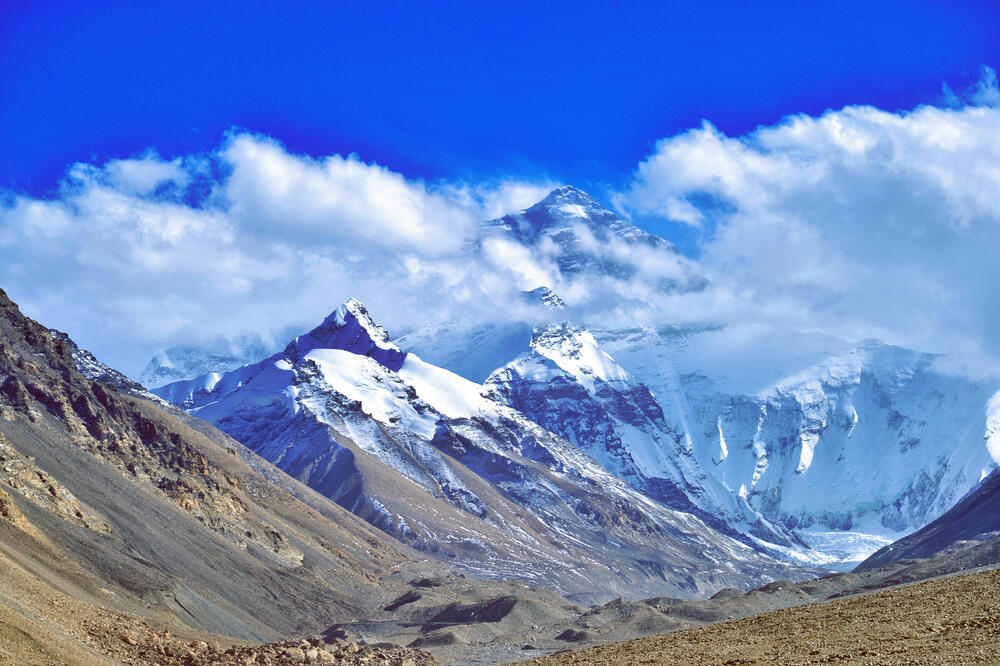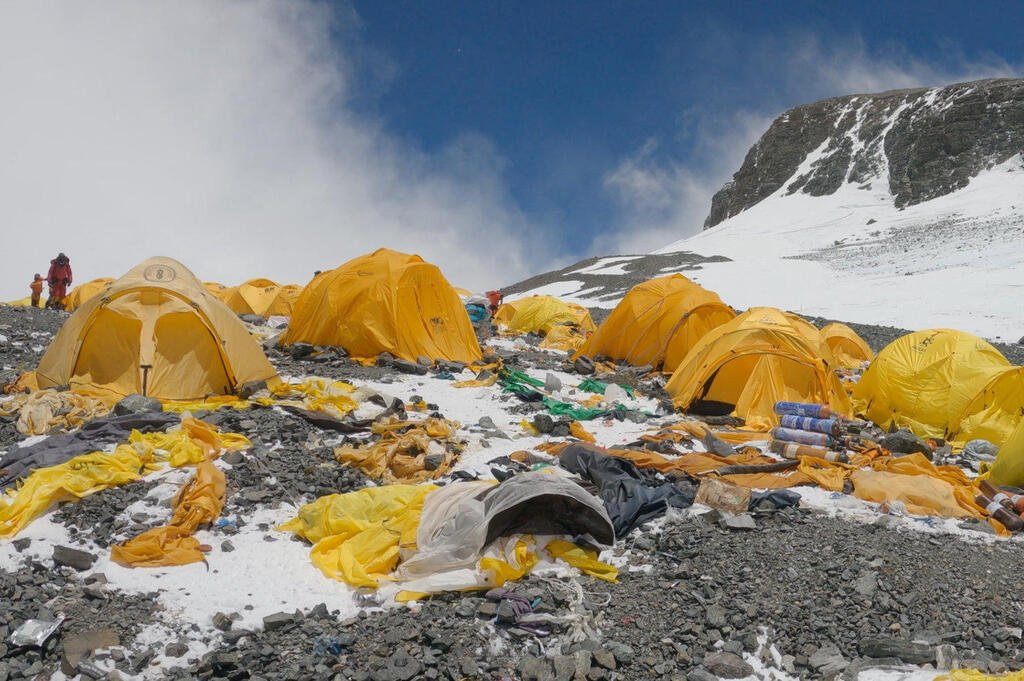Getting your Trinity Audio player ready...
Climate change is causing the melting of snow and ice on Mount Everest's slopes, exposing the bodies and skeletal remains of deceased mountaineers that have been preserved in the ice for decades.
Approximately 7,000 climbers have scaled Mount Everest since it was first conquered in 1953, with over 335 fatalities recorded. Many bodies remain on the mountain, some becoming landmarks like "Green Boots" and "Sleeping Beauty."
The 1996 Mount Everest disaster claimed the lives of 11 climbers due to a massive blizzard near the summit, with only half of the climbers surviving. They were stranded in the "Death Zone," facing zero visibility, hurricane-force winds, and sub-zero temperatures.
In 2006, British mountaineer David Sharp lost his life near the summit of Mount Everest without supplemental oxygen. He faced exhaustion at 8,600 meters and sought shelter in the "Green Boots Cave" but couldn't regain strength, leading to a debate about ethical concerns and unwritten codes among climbers.
Last year was the deadliest on record for Mount Everest climbers, with 17 fatalities. However, a Sherpa heroically saved a Malaysian climber in a perilous situation, carrying them 1,900 feet down the mountain to safety.
The current Everest mountaineering season ended with a relatively low death toll compared to past years, with eight people reported missing or dead, including a British climber and two Nepali guides, as well as three climbers who died on other Nepali peaks like Lhotse and Makalu.
As the snow and ice continue to thin, the bodies of deceased mountaineers, as well as trash and debris that were previously buried, are becoming more visible.
As part of Nepal's mountain clean-up campaign, teams have retrieved frozen bodies from Mount Everest's "death zone," risking their lives, while chipping away ice to recover the corpses, some still in full climbing gear.
A team led by Major Aditya Karki recovered five frozen bodies from Everest, Lhotse, and Nuptse in Nepal, using boiling water and hours of effort to extract them from the ice.
Tons of trash and historical rubbish left by expeditions were removed.
Despite costly and dangerous recovery efforts, some mountaineers' bodies remain missing or unidentified on Everest.
Nepal attracts hundreds of adventurers each spring due to its high peaks and favorable weather conditions, and this year, it issued over 900 permits for mountain climbing, generating more than $5 million in royalties, with more than 600 climbers and guides successfully reaching the summit of Everest.
Shocking images showed overcrowding in the Death Zone of the mountain, with climbers stuck due to traffic and fixed lines, running low on oxygen. A climber shared footage of a snow cornice collapsing under a queue of climbers, leading to a perilous situation.
Adventure Consultants offers trips to Everest for $73,000, providing climbers have fitness and climbing experience, while anyone willing to pay $11,000 for a permit can climb Everest under current regulations. Nepal's Supreme Court is calling for limitations on the number of climbing permits issued.
This article was written in collaboration with Generative AI news company Alchemiq
Sources: CBS News, VN Express, Weather.com, Fox 28 Spokane, IBTimes, SCMP, Economic Times, Outlook India, Citizen Digital.



